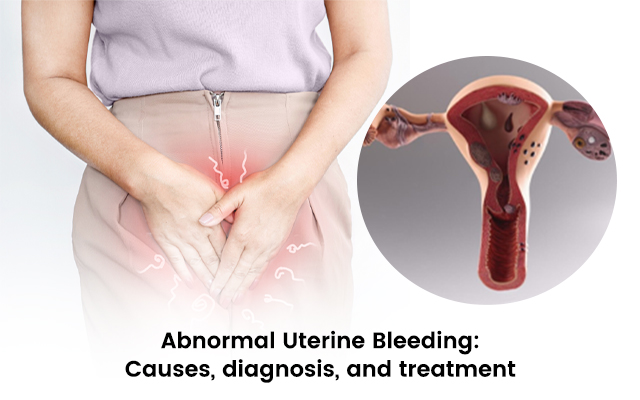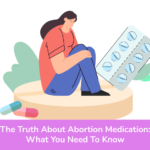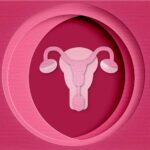Abnormal Uterine Bleeding Due to Hormonal Imbalance: Abnormal uterine bleeding (AUB) is a common gynecological condition characterized by irregular, prolonged, or heavy bleeding unrelated to normal menstruation. When caused by hormonal imbalance, it disrupts the delicate interplay of hormones that regulate the menstrual cycle, leading to significant physical and emotional challenges for affected individuals. This comprehensive guide explores the causes, symptoms, diagnostic methods, and treatment options for AUB due to hormonal imbalance, offering actionable insights for effective management.

Understanding Abnormal Uterine Bleeding (AUB)
AUB refers to bleeding from the uterus outside normal menstrual patterns. It is commonly classified into structural and non-structural causes. Hormonal imbalance, a non-structural cause, disrupts the hormonal regulation of the menstrual cycle, often leading to erratic bleeding.
Types of Abnormal Uterine Bleeding
- Polymenorrhea: Frequent menstruation with cycles shorter than 21 days.
- Menorrhagia: Excessive bleeding during regular periods.
- Metrorrhagia: Irregular bleeding between periods.
- Menometrorrhagia: Heavy and irregular bleeding.
- Oligomenorrhea: Infrequent menstruation, with cycles longer than 35 days.
Causes of Abnormal Uterine Bleeding Due to Hormonal Imbalance
The menstrual cycle is regulated by a complex hormonal axis involving the hypothalamus, pituitary gland, and ovaries. Any disruption in this axis can lead to AUB. Common causes include:
1. Anovulation
Anovulation occurs when the ovaries fail to release an egg, resulting in a lack of progesterone production. This leads to unopposed estrogen stimulation of the endometrium, causing irregular shedding and bleeding.
2. Polycystic Ovary Syndrome (PCOS)
PCOS is a hormonal disorder that often causes irregular ovulation, leading to AUB. It is associated with insulin resistance, hyperandrogenism, and chronic anovulation.
3. Thyroid Disorders
Both hypothyroidism and hyperthyroidism can disrupt the hormonal balance necessary for a regular menstrual cycle, contributing to AUB.
4. Perimenopause
During perimenopause, fluctuating hormone levels frequently lead to irregular bleeding patterns, including heavy or prolonged periods.
5. Stress and Lifestyle Factors
Chronic stress, extreme weight loss, or excessive exercise can interfere with the hypothalamic-pituitary-ovarian axis, triggering hormonal imbalances that cause AUB.
Symptoms of Abnormal Uterine Bleeding Due to Hormonal Imbalance
Common symptoms of AUB linked to hormonal imbalance include:
- Irregular menstrual cycles.
- Heavy menstrual bleeding requiring frequent pad or tampon changes.
- Prolonged periods lasting more than seven days.
- Spotting or bleeding between periods.
- Severe menstrual cramps or pelvic pain.
Diagnostic Approach for AUB
Accurate diagnosis of AUB involves a combination of clinical evaluation, laboratory tests, and imaging studies.
1. Medical History and Physical Examination
A detailed history helps identify the pattern of bleeding and associated symptoms. A pelvic examination is conducted to rule out structural causes.
2. Laboratory Tests
- Hormonal Assays: Assess levels of estrogen, progesterone, thyroid hormones, and prolactin.
- Complete Blood Count (CBC): Detect anemia due to heavy bleeding.
- Coagulation Profile: Rule out bleeding disorders.
3. Imaging Studies
- Ultrasound: Identify endometrial thickness and rule out structural abnormalities like fibroids or polyps.
- Hysteroscopy: Provide a detailed view of the uterine cavity for further evaluation.
Treatment Options for AUB
Treatment for AUB caused by hormonal imbalance depends on the underlying cause, severity of symptoms, and the patient’s reproductive goals.
1. Medical Management
a. Hormonal Therapy
- Combined Oral Contraceptives (COCs): Regulate the menstrual cycle, reduce bleeding, and prevent unopposed estrogen stimulation.
- Progesterone Therapy: Administered cyclically or continuously to counteract estrogen’s effects on the endometrium.
- Levonorgestrel Intrauterine System (LNG-IUS): Reduces heavy menstrual bleeding and provides effective contraception.
b. Non-Hormonal Medications
- Tranexamic Acid: Reduces heavy bleeding by stabilizing blood clots.
- Non-Steroidal Anti-Inflammatory Drugs (NSAIDs): Alleviate pain and decrease bleeding by reducing prostaglandin levels.
2. Lifestyle Modifications
Adopting a healthy lifestyle can help restore hormonal balance:
- Maintain a healthy weight.
- Manage stress through relaxation techniques.
- Follow a balanced diet rich in essential nutrients.
3. Surgical Interventions
For cases unresponsive to medical therapy, surgical options may be considered:
- Endometrial Ablation: Destroys the endometrium to reduce or stop bleeding.
- Hysterectomy: Reserved for severe cases or when other treatments fail.
Complications of Untreated AUB
If left untreated, AUB due to hormonal imbalance can lead to serious complications, including:
- Iron-Deficiency Anemia: Caused by excessive blood loss, leading to fatigue and weakness.
- Endometrial Hyperplasia: Unopposed estrogen stimulation increases the risk of abnormal endometrial growth and, in severe cases, endometrial cancer.
- Infertility: Chronic anovulation interferes with conception.
Abnormal uterine bleeding due to hormonal imbalance is a significant yet manageable condition. By understanding its causes, symptoms, and available treatment options, patients and healthcare providers can work together to develop tailored management strategies. Timely intervention not only alleviates symptoms but also prevents long-term complications, ensuring a better quality of life for affected individuals.

